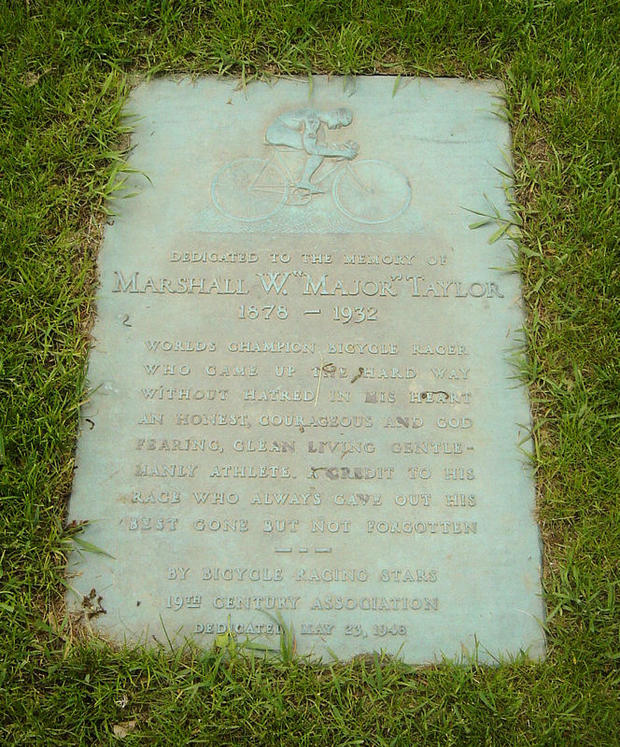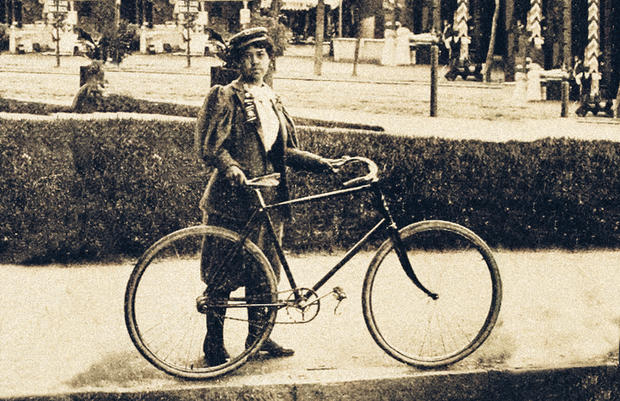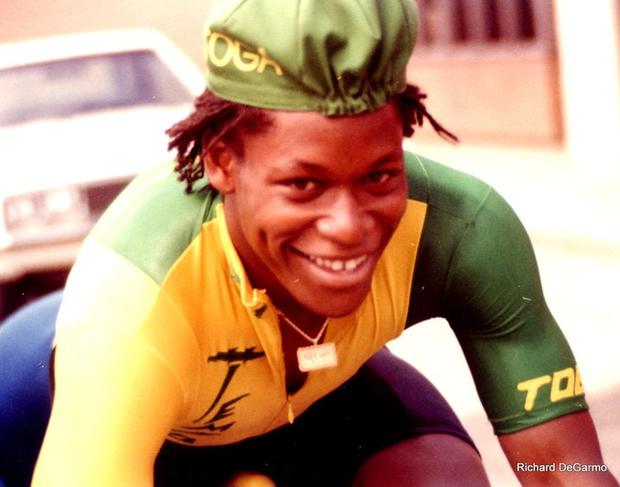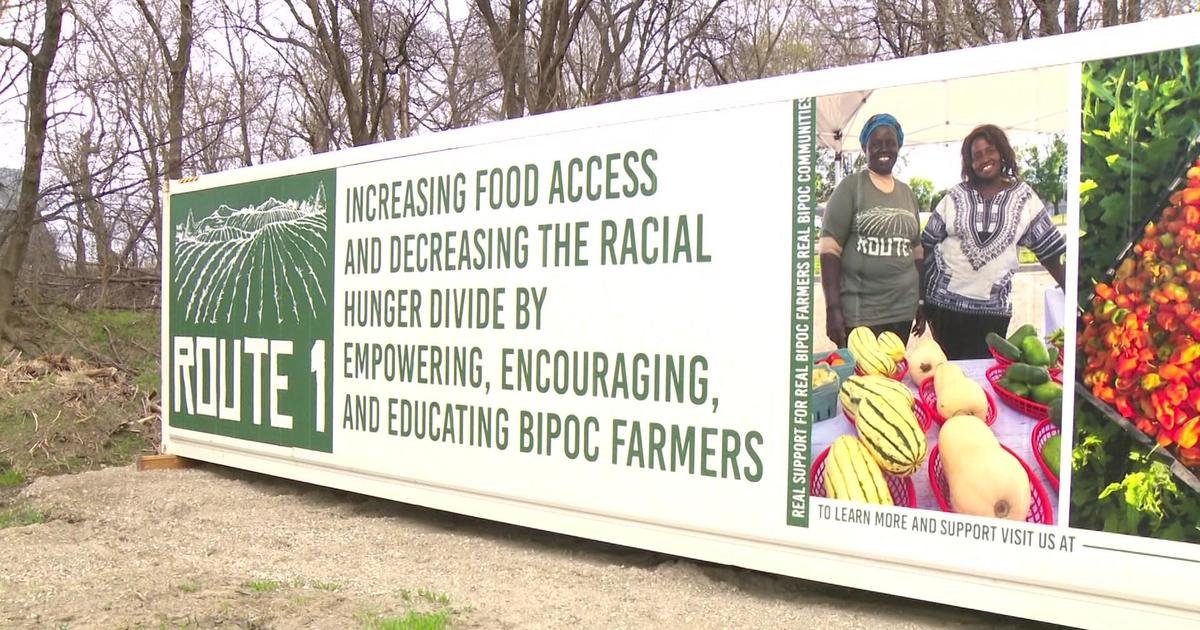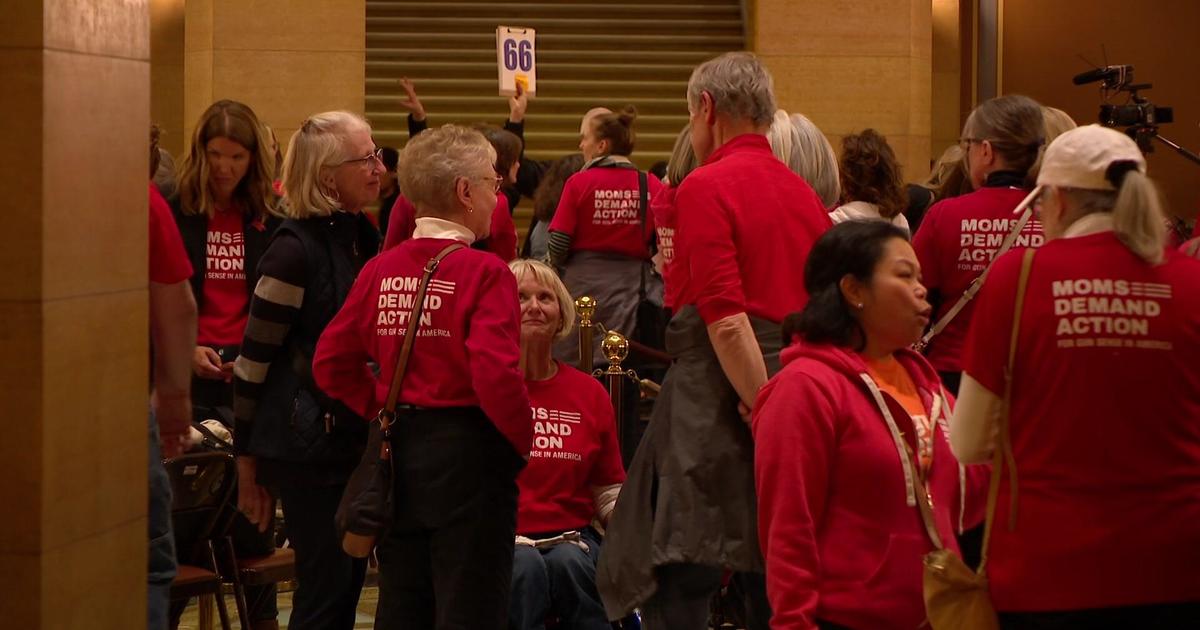Guy On A Bike: African-American Cycling Pioneers
Ever since the bicycle craze of the late 19th century, African-Americans have contributed to the great cycling culture of this nation. Despite economic disparities, racism and even on-track violence, black cyclists have persevered, embarking on treks of epic proportion and shattering both records and barriers in the world of cycling.
Sadly, many of these stories are not shared nearly enough, or forgotten altogether. Here are just a few of those inspiring stories.
Major Taylor
Marshall Walter "Major" Taylor was born in 1878, grew up outside of Indianapolis and received his first bicycle at the age of 12. He had a knack for the contraption and quickly taught himself some tricks. A local bike shop owner hired Taylor to perform outside of his shop. The boy executed the stunts while wearing a military uniform, which led to the nickname "Major."
Over the following years Taylor would begin racing in Indianapolis and quickly earned a name for himself as a formidable foe on the track. Shortly after he began winning races, Taylor was banned from competing in Indianapolis because of his color. Not long after, Taylor and his mentor (and fellow racer), Louis "Birdie" Munger relocated to Massachusetts, a more tolerant part of the country.
In 1896, at the age of 18, Taylor became a professional racer. Within two years he held seven world records and was winning 70 percent of the races he entered, in spite of myriad obstacles from white opponents, which ranged from being boxed in to getting pulled off his bike and choked during a competition. By 1899 Taylor was the world champion and had earned other monikers including "The Worcester Whirlwind."
In 1902, "The Black Cyclone" competed in the European tour and dominated the circuit. Taylor also raced in Australia and New Zealand during the peak of his career. Fans flocked to see him wherever he rode and his popularity was unparalleled. Although Taylor faced extreme racism and bigotry in the United States, he also had a lot of admirers from white America too, including President Teddy Roosevelt.
Taylor retired from racing at the age of 32. Following a divorce, persistent illness, the stock market crash and bad investments Taylor was nearly broke. The former world champion racer spent the last of his savings on a self-published autobiography which he sold at bicycle races from the trunk of his car.
Sadly, the champion cyclist died penniless in 1932, and was buried in an unmarked grave in Chicago. In 1948, the owner of Schwinn bicycles spearheaded an effort to have Taylor's remains exhumed and reburied at Mount Glenwood Cemetery (near Chicago) with a headstone honoring his legacy.
A number of chapters of the Major Taylor Bicycling Club have sprouted up around the country in recent years, in an attempt to engage more African-Americans in the sport. The Major Taylor Bicycling Club of Minnesota was established in 1999 and holds rides throughout the year, open to all regardless of ethnicity or ability. Members of the local chapter also serve on a number of bicycle advocacy committees, both locally and nationally.
Additionally, two Minnesota men, Conrad and Terry Kerber, recently published a comprehensive book on Taylor's life. It is a compelling read.
25th Infantry Bicycle Brigade
In 1888 the 25th Regiment of the Infantry of the U.S. Army was transferred from its post at Fort Snelling, Minnesota to Montana. The 25th consisted of a corps of more than 1,000 black soldiers, known by many as Buffalo Soldiers. Of those men, 20 went under the command of Lt. James Moss. Eager to make a name for himself, the young lieutenant proposed a bicycle corps, in order to assess the feasibility of bikes as military conveyances.
Moss teamed up with the Spalding bicycle company to design a machine specifically for military purposes. All loaded up, the single-speed steed weighed in at nearly 60 pounds. According to the Fort Missoula Museum, each bike was equipped with "a knapsack, blanket roll, and a shelter half strapped to the handlebar. A hard leather frame case fit into the diamond of each bicycle and a drinking cup was kept in a cloth sack under the seat. Each rider carried a rifle (first slung over the back, later strapped to the horizontal bar) and 50 rounds of ammunition."
On Aug. 6, 1896 Lt. Moss and six men from the bicycle corps embarked on their maiden ride, a 126-mile round trip from Fort Missoula. Despite horrible road conditions, soaking rains and myriad mechanical challenges, the group returned to the base after four days. Less than a week later they were off again, this time on a 325-mile trek to Yellowstone National Park.
It is important to note that many of these men had no previous experience with bicycles and that much of the terrain was untouched wilderness. At times the landscape was so foreboding the men chose instead to ride on railroad tracks, an endeavor sure to jostle the wits of any wheelman. After nearly a month (and just under 800 miles) of riding, pushing and carrying their bikes, the men returned to base. The arduous journey was only a precursor of the unit's most ambitious two-wheeled mission, which occurred the following year.
On June 14, 1897, Lt. Moss left Fort Missoula with 20 soldiers, a doctor and a newspaper reporter, in order to ride the bicycles to Saint Louis, Missouri, nearly 2,000 miles away. His right-hand man on the mission was Sgt. Mingo Sanders, a 39-year-old partially-blind soldier who was tasked with keeping the morale high among the ranks.
As the unit continued east they encountered curious people throughout, many of whom had never seen a black man before, let alone an entire detachment on bicycles. These trailblazing men made the front page of many small town papers and were the distinguished guests in parades and town celebrations along the way. They endured illness, mechanical problems, hail, mud and other hardships. Despite all of the challenges, the men arrived in Saint Louis in 40 days, averaging an impressive 6.3 mph and nearly 56 miles per day.
The soldiers were visited by 10,000 people at their campsite just outside of Saint Louis. Lt. Moss requested that the unit continue on to Saint Paul, MN but his request was denied. Their epic journey was over. The men loaded onto a train and rode back to Montana in relative comfort.
The following year Lt. Moss requested the formation of another bicycle corps, in order to ride to San Francisco. But growing tensions with Spain sent the 25th Infantry to Cuba and the bicycle corps was disbanded.
Kittie Knox
Decades before women were granted the right to vote in this country, Boston cyclist Kittie Knox was challenging racial and gender roles in the bicycling community.
Knox, born in 1874 to a free black father and a white mother, was an avid cyclist and a member of Boston's all-black Riverside Cycle Club. She was also a card-carrying member of the League of American Wheelmen (now known as the League of American Bicyclists).
Kittie was a competitive cyclist who completed numerous century (e.g., 100-mile) races and finished ahead of many of her male competitors. But she grabbed headlines for her color and dress, rather than her skill on a bicycle.
In 1895 Knox caused quite a stir when she arrived at the national convention of the League of American Wheelmen in New Jersey. Just a year earlier, after pressure from delegations in certain areas of the country, the league changed its bylaws to only allow whites.
A New York Times article about the incident referred to Knox as "a pretty young colored girl" who donned knickerbockers (or loose-fitting trousers), which were reserved for men at the time. She made her entrance to the event by riding her men's bicycle performing "a few fancy cuts in front of the clubhouse."
When Knox entered the clubhouse she was asked to leave. After producing her ALW membership many still insisted she leave, even threatening to quit the league, while others stood at her defense. Despite the fact that she was a member of the group before the whites-only rule was instituted, she was nonetheless sent on her way.
Her appearance at the League convention helped spark the conversation about race, but the forces of prejudice were strong, especially in the southern states. One cycling periodical of the time stated, "This murky goddess of Beanville" was "several checks shy of the complexion requirement." Sadly, it wasn't until 1999 that the league officially repudiated the law disallowing members of color.
Knox died just a few years later, at age 26, of a kidney disease, and was buried in an unmarked grave. Just a few years ago her gravesite was located, and a new headstone dedicated, thanks to the efforts of author Lorenz Finison. He learned of Knox while researching a book on Boston's cycling history. Had it not been for Finison's work Kittie's story would likely be a forgotten piece of history.
Nelson Vails
A more contemporary pioneer of black cycling is Nelson Vails, who, in 1984, became the first African-American to win an Olympic medal in his sport.
Vails came from humble beginnings, growing up in the Harlem projects during the turbulent 1960s. The youngest of 10 children, Nelson could often be found hanging around Central Park and an African-American motorcycle club called the Black Unicorns. He was fascinated by the machines and the men. One of the members ended up giving Vails his bicycle, a Peugeot PX 10. It was Nelson's first racing bike and, after that, he spent a lot of his free time in the saddle.
In the 1970s, Vails worked full time as a bicycle messenger in New York City. The profession was in its infancy and, instead of cell phones, riders started their days with a pocket full of dimes. After each delivery they would find a pay phone and call in to dispatch for the next run, turning those dimes into greenbacks. There is no doubt that the New York City traffic, coupled with the need to make deliveries fast, prepared the young man for a career in racing.
While working as a messenger during the week, Vails would often race in amateur competitions on weekends. One thing led to another and soon he made the leap to race professionally. He trained and competed for the one sprint racing spot on the1984 US Olympics cycling team. Sadly, the athlete lost out to Mark Gorski and it appeared Vail's dreams of competing in the Olympics were dashed.
Soon after, however, the Soviet Union announced it was boycotting the summer games in Los Angeles. (Many believe the boycott was in retaliation to the U.S. boycott of the 1980 Moscow games, while others speculate it was because the Olympic Committee had developed tests to check for doping.) As a result, the U.S. Olympic team was able to add a second sprint cyclist. Nelson Vails was going to compete in the 1984 games.
In front of thousands at the Olympic Velodrome, both Vails and Gorski advanced through the rounds. During their semi-finals heats the men made quick work of their competition, guaranteeing Americans would stand atop the top two spots on the podium. The training partners would now become rivals. Ultimately, Gorski won the gold but Vail's silver medal cemented his place in African-American cycling history. To this day, Vails is the only African-American who has ever won an Olympic medal for cycling.
Following on that success, Nelson Vails appeared in a Ray-Ban commercial and even made a cameo appearance, as a bicycle messenger, in the 1986 Kevin Bacon film Quicksilver. Today he remains an active cyclist and advocate of the sport.

